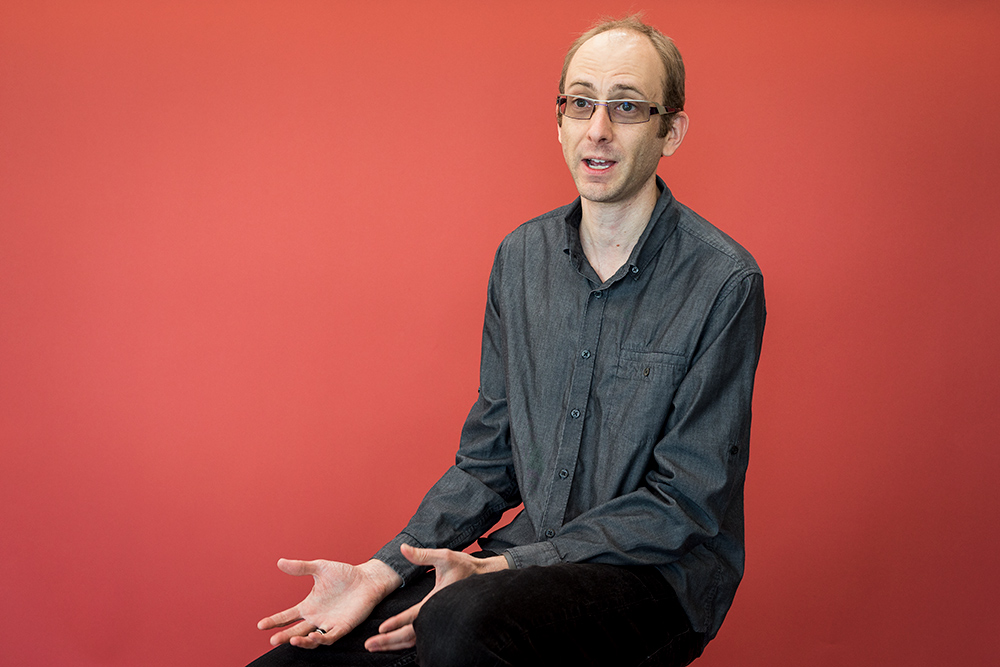
Josh Morgan, an animation technical services engineer at LMU, is a lecturer in the School of Film and Television and the Frank R. Seaver College of Science and Engineering. He has studied the films of Japanese animation filmmaker Hayao Miyazaki and has published an article on the subject in Animatrix, an animation-based journal produced at UCLA. Morgan teaches interactive animation and game design. He was interviewed by Editor Joseph Wakelee-Lynch.
What’s the appeal of the films of Hayao Miyazaki, and those of his Studio Ghibli, especially in the West?
Miyazaki’s films inhabit fantastic worlds that are so different from our own reality that they are compelling. The themes he explores are universal: the human condition; emotions like loss and sadness; and love, friendship and family. There are elements that are uniquely Japanese. “Spirited Away” takes place in a Japanese bathhouse. “My Neighbor Totoro” has scenes that take place in rice paddies. Creatures that inhabit his worlds are from Japanese mythology. But environmental themes in his films, for instance in “Spirited Away,” “Princess Mononoke,” “My Neighbor Totoro,” and “Nausicaä,” are universal. War and the impact of war on the planet is a theme of “Howl’s Moving Castle” and “The Wind Rises.” Miyazaki definitely provides cautionary tales warning us that what we do, what we produce and how live affects the planet as a whole.
Flight and characters who fly play a prominent role in Miyazaki’s films. What is the challenge in making flight believable in an animated film?
Miyazaki’s films are set in fantastic worlds that require a certain amount of suspension of disbelief. So, it’s less about “selling” the specific actions, whether walking or flying, and more about creating a believable world in general. If the world itself is believable to the audience, then if you want to make someone fly, it’s as simple as making someone fly. But Miyazaki in particular has a good understanding of the mechanics of flight from a physical standpoint. His early films were specifically about flight. He uses flight as a metaphor for power.
How do you describe the difference between the Studio Ghibli style and that of Disney or Pixar, based in the U.S.?
They both concentrate on story: Story is king at both Ghibli and Disney. Disney tends to concentrate, and even fixate, on romantic love — the princess finding a prince and falling in love being a core dynamic in their primary narratives for many years. There are exceptions, and in recent years, they’ve been shifting away from that. “Frozen” had a little bit of that love story intermixed, but it’s also about the family unit. “Moana” definitely shifts away from that. It’s not a love story at all, and ultimately that helps empower Moana as a strong female character. Miyazaki’s films generally don’t have that romantic narrative. The loss of family is a common theme. In “Spirited Away,” the main character’s parents get turned into pigs, and she’s trying to get them back and regain her family. “Ponyo” is about a mother-daughter dynamic. In general, Miyazaki’s films can go to a darker, scarier place; there is a stronger sense of danger and mortality. Characters can die. Disney films are definitely marketed for kids, but Miyazaki films explore more-adult themes.
Are Miyazaki’s films unusual in their depiction of girls as main characters?
Miyazaki has very, very strong female characters. The fact that they’re female is often secondary to the narratives. Sometimes other characters will view the main characters negatively because they’re girls, as in “Spirited Away” and “Princess Mononoke,” but that becomes an empowering thing for them. They act very strongly in response to that negative view of them as girls. Those characters are strongly feminist. They’re not victims of their femininity at all. They’re empowered by the fact that they’re girls.
